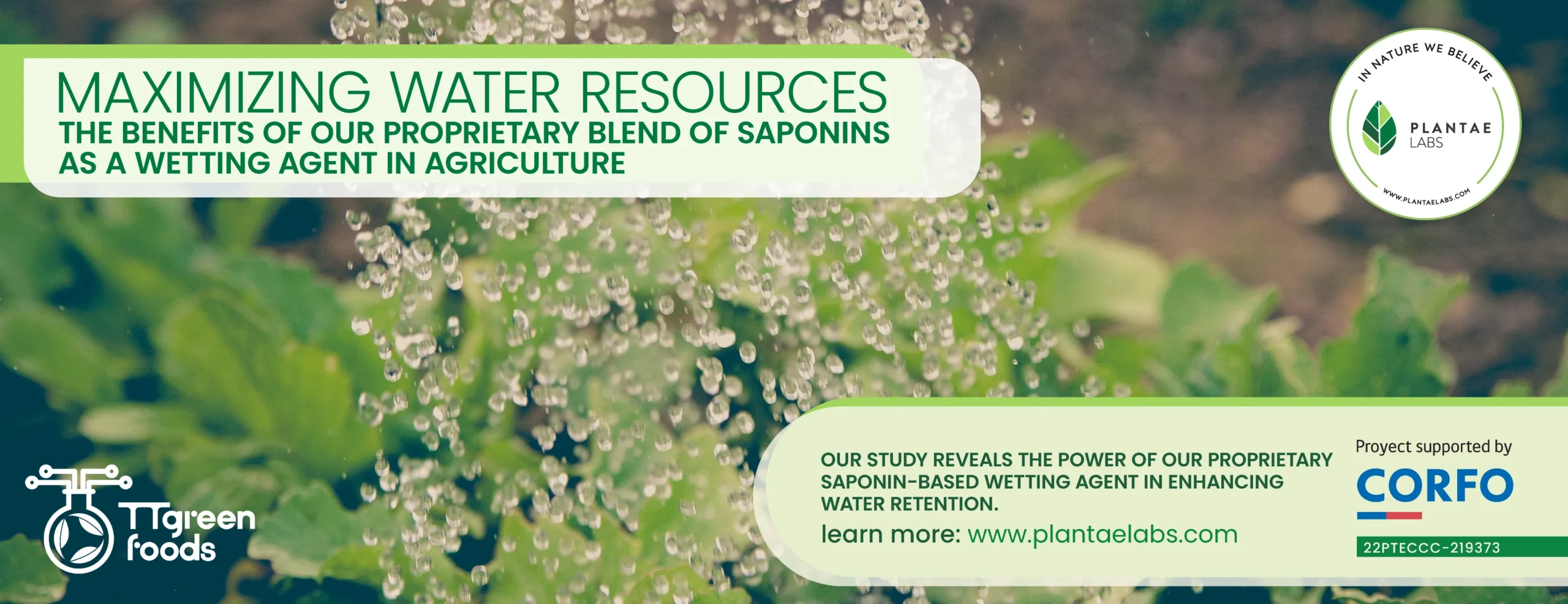In the face of escalating water scarcity, sustainable agricultural practices are more critical than ever. Led by TT Green Foods, with co-execution from our R&D specialist Luis Ríos, the CORFO project 22PTECCC-219373 focuses on developing a proprietary blend of natural saponins, to create an innovative wetting agent. This solution is designed to maximize water use efficiency by improving soil hydration, tackling soil hydrophobicity, and supporting water retention and microbial health in challenging, eroded soils.
The Surfactant Power of Saponins
Triterpenic Saponins exhibit remarkable surfactant properties, which play a crucial role in enhancing water dynamics within soil. These saponins possess a unique molecular structure with both hydrophilic (water-attracting) and hydrophobic (water-repelling) ends, which allows them to significantly reduce water’s surface tension and lower the contact angle when water interacts with soil. This reduction in surface tension enables water droplets to spread more effectively across soil surfaces, enhancing their coverage area and ensuring that more of the soil’s surface is wetted by each drop (Song et al.,2019. Zhang L, et al., 2018).
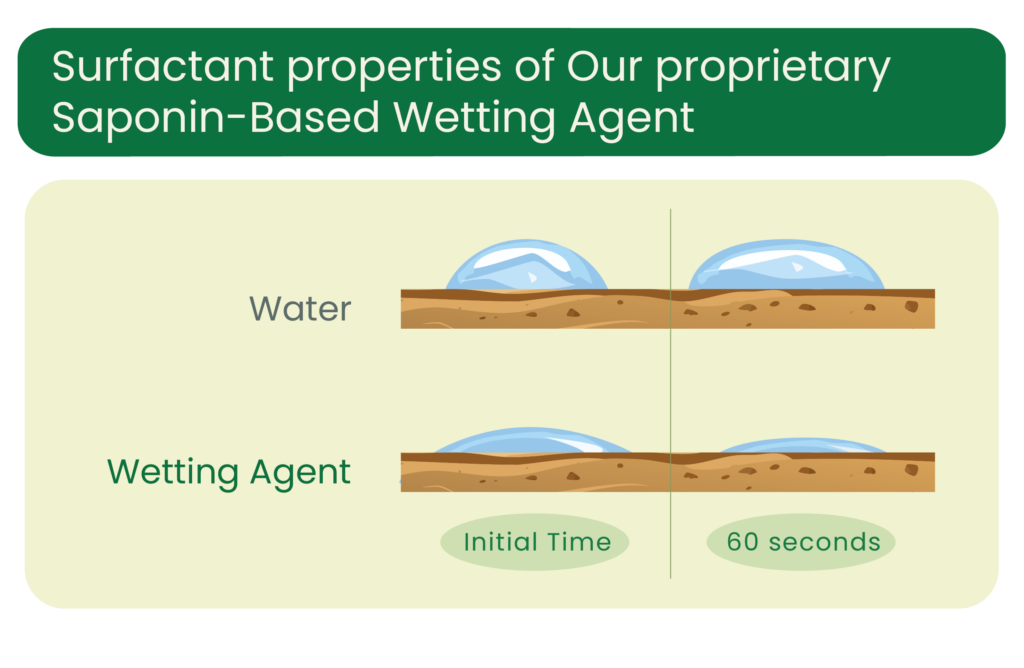
To better illustrate this effect, the graph below shows the surface tension (mN/m) of different dosages of our saponin blend compared to water over time:
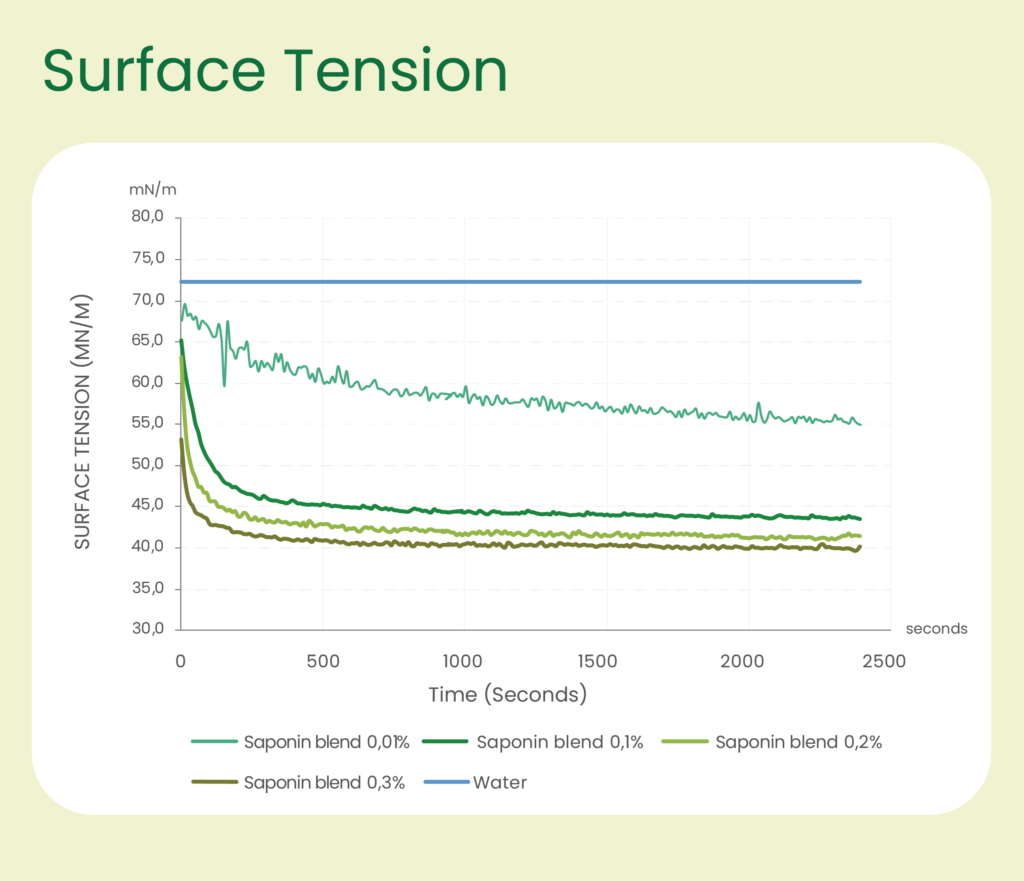
Enhanced Water Retention and Infiltration with Our Proprietary Saponin-Based Wetting Agent
Our proprietary saponin-based wetting agent’s surfactant properties are especially effective for increasing water retention and infiltration in soils. By lowering the surface tension of water, our solution facilitates deeper, more uniform water penetration across soil particles. This reduction in surface tension prevents water runoff and ensures that moisture reaches root systems more effectively, which is crucial for healthy plant growth.
This effect is particularly beneficial for soils affected by compaction or water repellency, common challenges in agricultural practices. Soils treated with our triterpenic saponin blend show a 50% improvement in infiltration rate under drought conditions. On the other hand, treated soils retain up to 17% more water under saturated conditions and retain more water during drought conditions compared to untreated soil. These improvements support longer-lasting moisture availability, which can help reduce irrigation needs and mitigate crop stress during dry periods. The benefits of surfactants in enhancing soil moisture retention and improving infiltration dynamics have been documented in various studies. For instance, Xiang and Zhang (2018) discuss the significant impact surfactants have on soil water dynamics, emphasizing their role in improving moisture availability and crop resilience. Furthermore, Vázquez et al. (2021) evaluate management practices aimed at enhancing water retention in agricultural soils, highlighting the effectiveness of surfactants like triterpenic saponins in achieving sustainable water management.
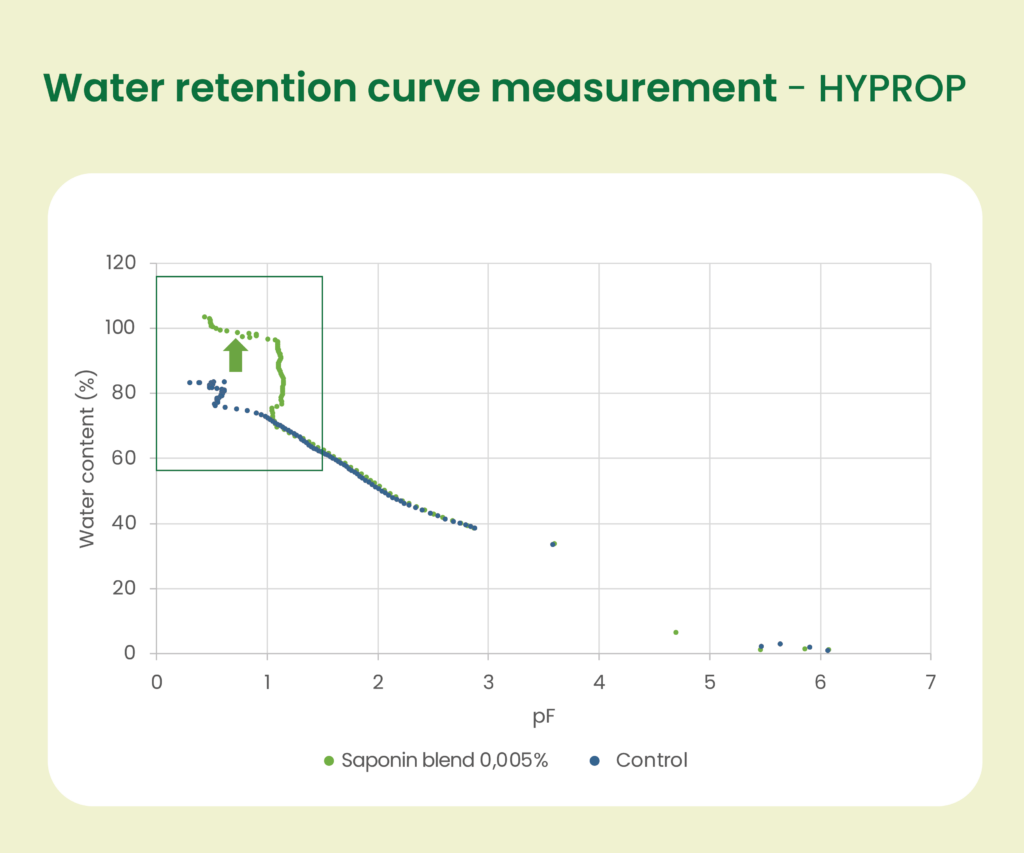
The graph above shows the increased water retention achieved with our saponin blend, compared to untreated soil, under both saturated and residual conditions.
Additionally, our proprietary saponin extract promotes long-term resilience by enhancing soil structure, which in turn supports healthier root growth and microbial activity. Research on triterpenic saponins highlights their role in improving soil-plant interactions, as they facilitate nutrient availability and root development. These combined benefits foster a more balanced and fertile soil ecosystem, which is particularly advantageous for sustainable agriculture in water-scarce environments, where effective water use and root efficiency are crucial (Saha, et al, 2010).
To measure water retention, we applied the HYPROP method, which evaluates evaporation and dew point data to assess soil moisture dynamics.
Parameter Table for Water Retention
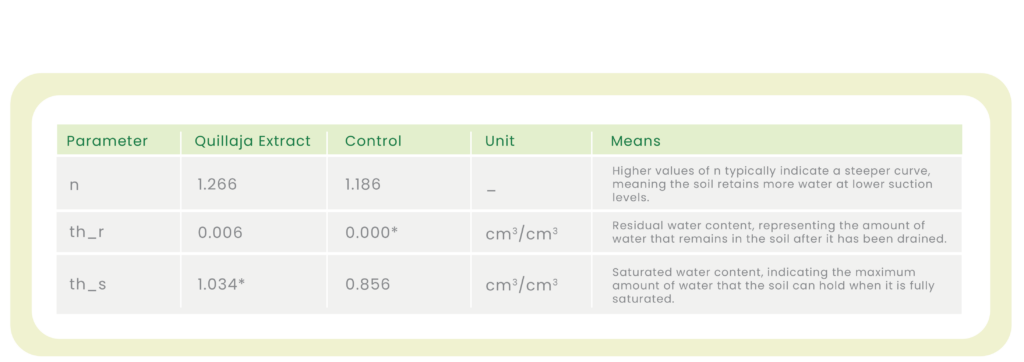
Practical Implications
The integration of our Proprietary Saponin-Based Wetting Agent offers substantial benefits for sustainable agriculture. By enhancing water retention and reducing water repellency, this solution can decrease the need for frequent irrigation, which is especially valuable in water-limited environments. Its positive impact on soil health and plant resilience can translate into more sustainable crop management practices, supporting long-term productivity and environmental sustainability.
Ready to improve your agricultural practices with our saponin-based solutions? Contact us today to learn more and get started!
References
- Saha, S., Walia, S., Kumar, J., & Parmar, B. S. (2010). Triterpenic saponins as regulator of plant growth. Journal of Applied Botany and Food Quality, 83(2), 189 – 195. https://ojs.openagrar.de/index.php/JABFQ/article/view/2148
- Song, Z., Li, G., Wu, Y., & Ma, X. (2019). Effects of surfactants derived from Quillaja saponaria on water retention and soil hydraulic properties. Sustainability, 11(16), 4505. https://doi.org/10.3390/su11164505
- Zhang, Y., Chen, J., Zhang, Z., & Wu, Q. (2018). Application of saponins as natural surfactants for improving soil water retention and reducing soil erosion. RSC Advances, 8(34), 18945-18953. https://doi.org/10.1039/C8RA02859A
- Vázquez, E., Benavides, R., & Gutiérrez, H. (2021). Soil management practices for improving soil structure and water retention. Land Degradation & Development, 32(2), 666-678. https://doi.org/10.1002/ldr.3382

